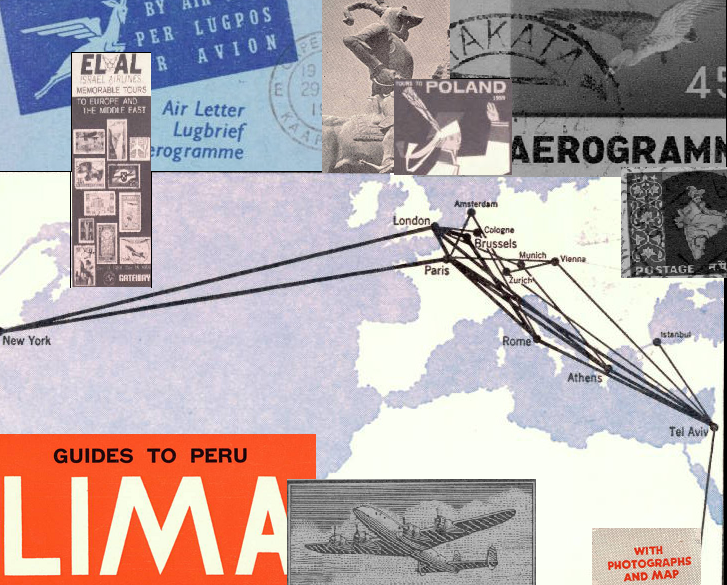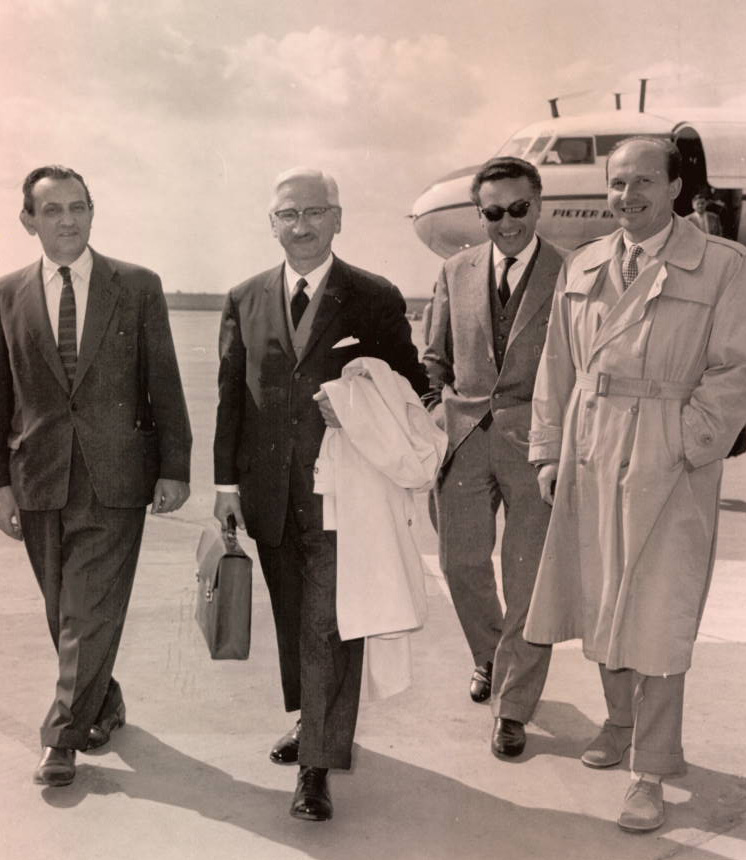By: Richard Sookoor, Sabin Student Assistant
While perhaps never considering himself an adventurer, Dr. Sabin was surprisingly well traveled. Considering the span of his career, both military and academic, it might not seem unusual to visit quite so many different countries, though it is remarkable nonetheless.
Though he admits his adoration of living in the US, it seems the desire to travel was well within Dr. Sabin’s nature. Having traveled to at least 32 different countries* in his life, the opportunity to experience so many different cultures and lifestyles appears to have been well exploited. From cities as exotic as Dakar [1] and Bombay (at least in the 1960’s) to more contemporary locales like Stockholm and Paris, Dr. Sabin certainly realized the divergence of a (then) disconnected world.
Concerning his career, Dr. Sabin’s travels began during his time in the military. Due to his position and studies, he was sent on tours where disease and illness were prevalent among troops. This ultimately meant he was able to visit Japan, North Africa, and the Mediterranean at a relatively young age. The majority of these countries he would later return to in order to expand his work, as well as follow up with contacts he had previously made. Interestingly, Dr. Sabin had a large network of colleagues and friends from various parts of the world whom he always tried to keep in contact with. Aside from his work, this gave him good enough reason to attend many conferences and give lectures at different locations. As polio vaccination campaigns began to roll out in many countries, Dr. Sabin would sometimes visit as a gesture of confidence and good will.
In addition to simply traveling, Dr. Sabin also lived in three different countries throughout his life. After being born in Bialystok, then part of the Russian Empire, his family relocated to the US (New Jersey, specifically). [6] He spent three years living in Israel as President of the Weizmann Institute, undoubtedly perusing the region in his spare time. His eventual return to the United States did not conclude his travels to the area, as he visited Israel a number of times afterwards.
Interestingly, Dr. Sabin sometimes had his family accompany him on his trips. Though billed as a vacation, he often tied in a lecture or meeting to keep work moving along. So whether receiving two lovely scarves for his two lovely daughters from Ms. Shinozaki in Tokyo [2] or transporting cultures of Histoplasma to Bucharest [3], the travels Dr. Sabin found himself on must have been extraordinary.
*List of countries/areas visited: Sweden, Denmark, France, Netherlands, Great Britain, Czechoslovakia, Romania, USSR, and Great Britain, Israel, Switzerland, Japan, India, Spain, Yugoslavia, Venezuela, Peru, Mexico, Hungary, Cuba, Italy, Russia (USSR), Bermuda, Brazil, Columbia, Philippines, Egypt, various countries in North Africa (military) [4]. [5]
References
[1] Trip to South Africa, September 1963, Found in Professional and Personal Engagements, Sub-series Travel.
[2] Trip to Japan, September 1961, Found in Professional and Personal Engagements, Sub-series Travel.
[3] Trip to Czechoslovakia, Romania, USSR, and Great Britain, April – May 1957, Found in Professional and Personal Engagements, Sub-series Travel.
[4] Military service in North Africa, Found in Military Service, Sub-series Source Material.
[5] Various trips around the world, 1949-1992, Found in Professional and Personal Engagements, Sub-series Travel.
[6] Bowen, E. (1984, July 2nd). Albert Sabin. People Magazine, Vol 22, No. 1. Retrieved July 17, 2012, from http://www.people.com/people/archive/article/0,,20088192,00.html
In 2010, the University of Cincinnati Libraries received a $314,258 grant from the National Endowment for the Humanities (NEH) to digitize the correspondence and photographs of Dr. Albert B. Sabin. This digitization project has been designated a NEH “We the People” project, an initiative to encourage and strengthen the teaching, study, and understanding of American history and culture through the support of projects that explore significant events and themes in our nation’s history and culture and that advance knowledge of the principles that define America. Any views, findings, conclusions, or recommendations expressed in this blog do not necessarily reflect those of the National Endowment for the Humanities.


